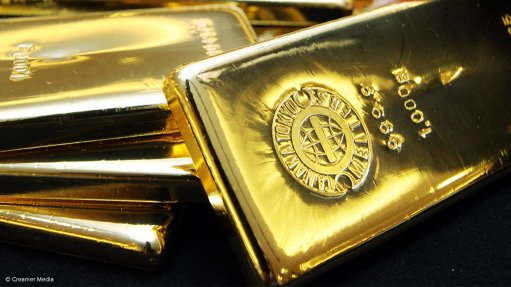
Photo by: Bloomberg
The gold price fell for the sixth consecutive month, dropping 2.6% to finish September at $1 671.80/oz on the back of the twin headwinds of a surging dollar and higher bond yields, according to October 6 commentary by the World Gold Council (WGC).
The council said it was a challenging month for most assets, with global equities down 9.5%, global bonds down 5.1% and commodities down 8.4%.
While a relative outperformer and therefore a good diversifier, gold was not the crisis hedge as before, certainly when measured in dollars.
However, for non-US investors, gold’s performance remained strong so far.
Adding to pressure on the US dollar gold price, gold futures fell to their shortest net position in four years. In addition, gold exchange-trade fund outflows continued, with holdings falling 95 t over the month, the WGC said.
“Price resistance under these pressures was, however, quite impressive”, the WGC said, noting that gold hit a monthly intra-day low of $1 615/oz but recovered to end the month above $1 670/oz.
The WGC’s gold return attribution model highlighted a disconnect between what was suggested by gold’s long-term drivers and how gold actually fared.
It said that large positive residuals – captured by the “unexplained” category – during 2022 were likely the result of an unquantified geopolitical risk premium in gold or potentially a change in the sensitivity of gold to some of the underlying variables.
The WGC said it believed both factors were at play.
“In the case of a sensitivity change, we believe investors are less concerned – but not unconcerned – about rising interest rates, as forward expectations of rates remain anchored at considerably lower levels,” the council said.
The surge in the dollar – up 15% this year alone as measured by the dollar index (DXY) – had been a “headache” for many assets in the second half of the year and was now becoming a rising burden for central banks, the WGC said.
It explained that the impact on gold had been two-fold.
First, gold was most commonly quoted in dollars. Therefore, as its numeraire, a stronger dollar necessarily leads to a falling gold price.
Second, this impact was compounded in the recent rally by the dollar’s safe-haven demand, creating competition for gold. The WGC noted that, outside of the US, gold performed well in both nominal and real terms.
It said that two factors explained almost 90% of dollar strength since late 2020. There were interest rates differentials and safe-haven flows.
The WGC said aggressive US Federal Reserve (the Fed) monetary policy tightening, relative to other major central banks, had made the US an attractive destination to obtain yield.
Alongside this, the Fed’s overnight liquidity reverse-repo facility had become a refuge for investors, doubling holdings from $1.2-trillion to $2.4-trillion in a year.
In the WGC’s view, there were three factors that might trigger a reversal – or at least a pause – in the dollar, thereby alleviating some of the pressure on gold.
The first of these was a historically high valuation and positioning in the dollar relative to DXY components.
The second factor was central bank intervention in foreign exchange markets and/or bond markets, with the third factor being better aligned bond market expectations.
“We think the dollar will be a key driver of gold prices over the next few months and see risks to dollar strength primarily from valuation, positioning and further central bank intervention – which would be gold supportive,” the WGC said.
In addition, the council said it appeared as though gold investors now viewed policy rate rises as less of a threat to gold than before.
“They appear to have accepted Fed hawkishness and its terminal rate forecast. In addition, their sensitivity to Federal Market Open Committee announcements has fallen and the growing yield curve inversion and forward rate expectations signal a consensus expectation for lower rates ahead,” the WGC said.